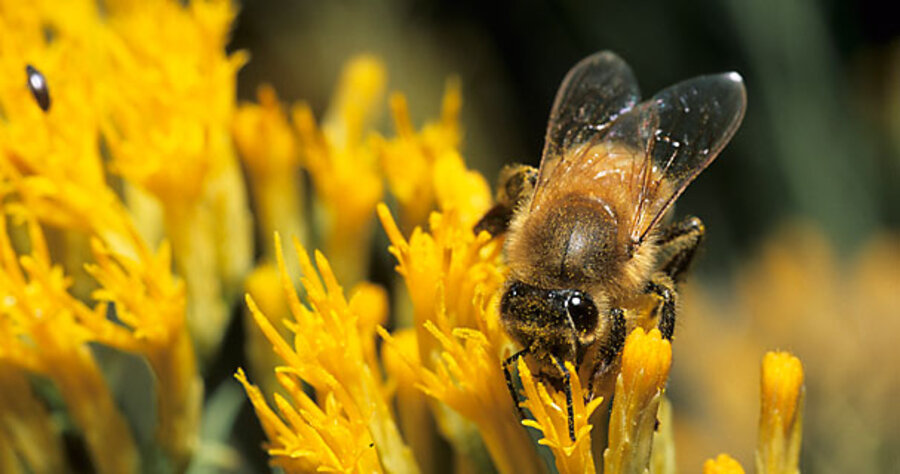House panel probes honeybee disappearances
Loading...
"I am not a scientist, I am a farmer, and I know one thing for certain," said North Carolina cucumber grower Robert Edwards. "No bees, no crops."
Mr. Roberts was testifying Thursday before the House Agriculture Subcommittee on Horticulture and Organic Agriculture, which had brought together scientists, farmers, beekeepers, and businesspeople to examine the mysterious phenomenon known as colony collapse disorder.
It started in 2006 and has been getting worse. According to the Cox News Service, beekeepers have lost about twice the percentage of bees that they would lose during a typical winter. So far this year, American beekeepers have lost 36 percent of their hives, compared with 31 percent in 2007. Some beekeepers in the United States have reported losses of up to 90 percent of their hives.
This is about more than just honey. As the Daily Telegraph, a British broadsheet, points out, bees pollinate one-third of the crops grown in the United States, including almonds, onions, apples, pears, soybeans, melons, and berries.
Among the witnesses at the June 28 hearing was Kathy Pien, brand director for Häagen-Dazs. The Oakland, Calif., ice cream company (bet you thought they were Swedish) said that more than 40 percent of its flavors are derived from fruits and nuts that depend on honeybees.
According to the San Francisco Chronicle, Häagen-Dazs gave $250,000 to UC Davis and the University of Pennsylvania to investigate the phenomenon. The company also launched a limited-edition flavor, Vanilla Honey Bee, and a website to raise awareness of the problem.
Also testifying was John Replogle, the CEO of North Carolina skin-care products maker Burt's Bees, which, according to the Charlotte News-Observer, uses bee-pollinated ingredients in 60 percent of its products and bee derivatives like honey and beeswax in 40 percent of its products.
"Without the bees, there would be no Burt's Bees," Mr. Replogle told the panel.
Scientists are puzzled as to what causes colony collapse disorder, in which a hive's worker bees abruptly disappear, leaving no corpses, but ample food stores and a brood of cocooned pupae.
Possible explanations include poor nutrition, mites, viruses, fungus, pesticides, genetically modified crops, electromagnetic radiation, and climate change.
One promising avenue of research is occurring at Penn State, a leading center of investigation into this phenomenon. There, researchers have noticed a strong correlation between colony collapse disorder and the presence of Israeli acute paralysis virus.
Suspecting a connection, the researchers introduced the virus to healthy honeybee colonies in a controlled greenhouse environment. Within a week, they found dying bees on the floor, well away from the hive. It turns out that guard bees were carrying the infected bees away from the hive and depositing them on the other side of the room.
The Penn State researchers think it's a start, but they suspect that "additional stresses" are needed to trigger colony collapse.
In the meantime, the government is stepping up funding. The Chicago Tribune notes that the recently approved five-year farm bill authorizes $20 million in new funding for bee-related studies. The Trib points out that this is the first farm bill to use the word "pollinator."
The paper also reports that next month, the Agriculture Department is expected to announce a new $4.1 million bee research project "spanning multiple universities."
[Via KSJ Tracker]





